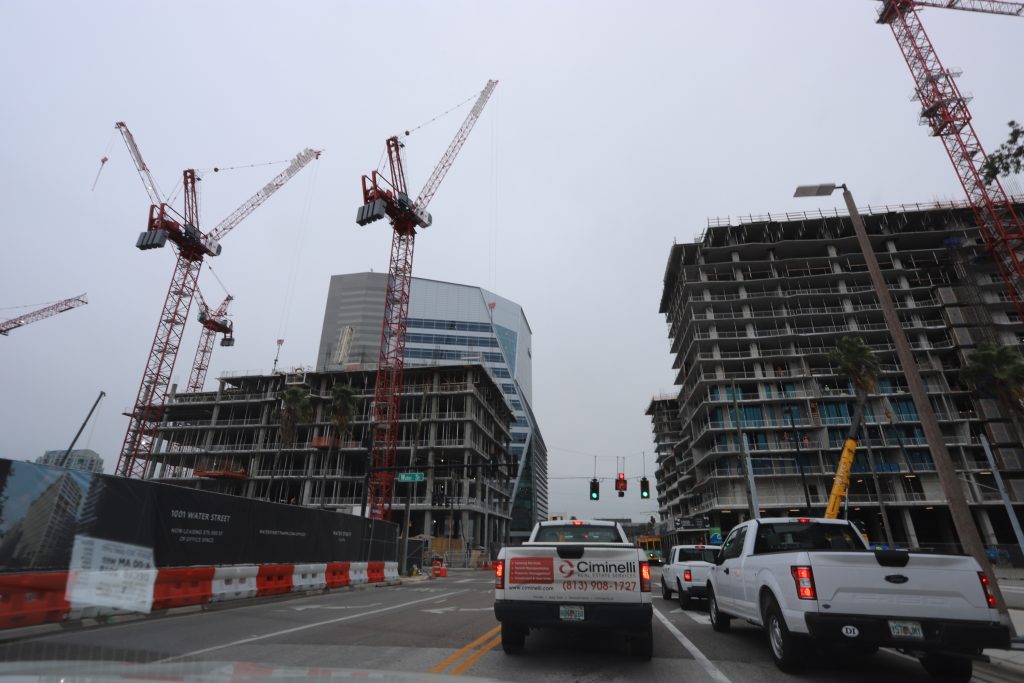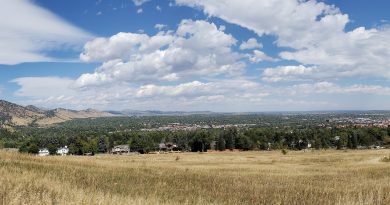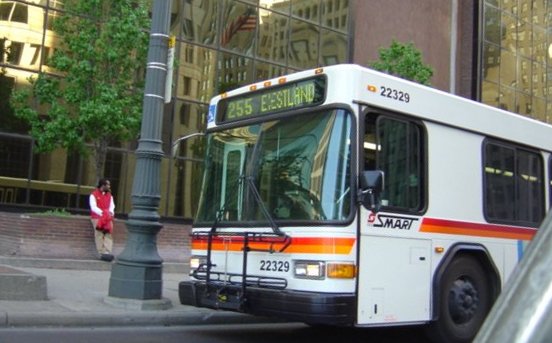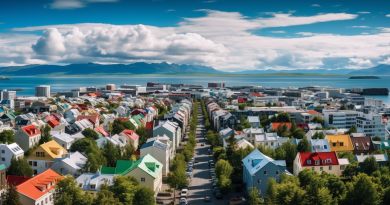Bridging The Transit Gulf: APTA Conference in Tampa
I just wrapped up a few days in Tampa for APTA’s Transit Initiatives workshop. The mini-conference, produced by the DC-based nonprofit, is focused on helping transit agencies, municipal staff, planners, and other professionals working in the mobility space, figure out how to get transit initiatives past the ballot box.
As far as conferences go, it was fairly small. But this did not stop an excellent program. We had some great speakers including the mayors of Tampa and Phoenix, two cities that are making some great strides away from their transit-unfriendly notoriety. Pinellas and Hillsborough Counties, respectively the homes of St. Petersburg-Clearwater and Tampa, were well-represented. The Midwest also turned out. Four of us came from Detroit including veteran transit consultant Laura Trudeau, Matt Webb from the RTA, and Megan Owens from TRU.
There was also a crew from Cincinnati, where a recent transit initiative passed by repealing an earnings tax and replacing it with a countywide sales tax.

TAMPA: FIRST IMPRESSIONS
I had admittedly very low expectations for Tampa. But I’m pleased to report that they were handily exceeded.
Unless you count a 23-hour layover in Orlando, it was my second time in Florida as an adult. I once went to Miami on a relatively last-minute whim as I was dealing with a protracted saga of getting laid off and needed to get out of town. I had three conditions for that trip: seeing some live jazz (preferably Cuban jazz), seeing Miami Beach’s Art Deco hotels, and eating at a spring-break-worthy crab shack type place on a beach. I achieved all three of these goals and it was a glorious trip.
So, I had no idea what to expect. Tampa has come up in discussions about Detroit as a kindred spirit in its historically similar, abysmal commitment to regional transit. Both cities, thankfully, are making moves!
I stayed in an area that Google Maps identified to me as North Hyde Park, near the University of Tampa. The neighborhood had older, multifamily apartment buildings, as well as squat bungalows of various ages. Nothing seemed too old. There were some new townhousey apartments– dubiously billed on my maps as “lofts.” The housing mix was pretty standard for South Florida, a combination of drab cinder block and somewhat more elegant stucco and American craftsperson homes. The neighborhood felt pretty quiet, but there was also a distinctly urban Floridian mix of light industrial and low-density residential. New construction is slowly but steadily densifying much of Tampa. Unfamiliar to my Yankee sensibilities were the ubiquity of hurricane-proof construction– basementless, cinder block homes, versus the stick-frame on basement foundations I’m used to.
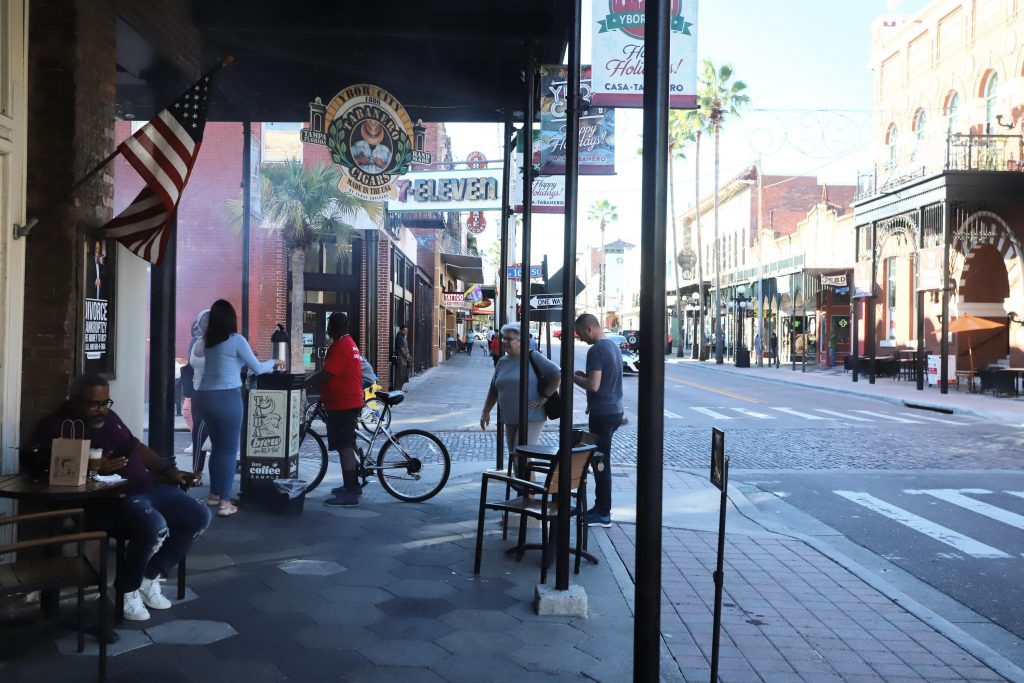
The check-in to the artsy-moderne AirBnB was easy. There was a nearby venue that not only was hosting a stellar open mic night on Saturday, but also offered a five-stars-on-Yelp-worthy menu. A coffee shop was a quick walk around the corner. I had a probably 1200 calorie bagel sandwich with a salmon/whitefish salad at a deli in the neighborhood that also had some sort of arts event on Saturday night.
I checked out the Henry B. Plant museum, which gives some history on the man, the plan, and the history of Florida’s tourist industry. Like his frenemy Henry Flagler, Plant was focused on industrial development via railroad alongside his interests in tourism. Both Henries had sought out these warmer climes as remedies for the ailing constitutions of their respective wives. Plant was more focused on the west coast of the state while Flagler was more on the east. (For anyone interested in further reading, I greatly enjoyed Last Train To Paradise, a detailed chronicle of the development of Flagler’s spectacular, if ill-fated, railroad to Key West).
Cognitive dissonance abounded for my cold weather sensibilities as I strolled around in a t-shirt among palm trees and was offered Christmas cookies, cider, and a Christmas-themed carriage ride. After the museum, I peeked in the Oxford Exchange brunch-industrial-giftshop megalith across the street.

GETTING AROUND THE CIGAR CITY
Getting around the neighborhood, on the other hand, was another story. The Downtown bus along Kennedy Blvd. was several blocks south, which was easy enough, but still an inconvenient, multiple-step connection to the conference venue. While the AirBnB offered its own bikes for guests and Limes and Birds abounded, walking was tough. Sidewalks cracked into oblivion and, indeed, sometimes disappeared altogether.
The disinvested infrastructure of Tampa betrays Florida’s narrative of perpetual growth and sunshine. Storm drains with concrete caps askew. Cracked sidewalks. Indeed, plenty of areas where there are no sidewalks, and one must walk in the streets, which range from unreasonably wide to surprisingly narrow. More than once or twice I had my sidewalk trip interrupted by a completely missing section of sidewalk.
I felt quite at home, as this sort of thing happens all the time in Detroit. But the major difference is that Michigan isn’t pushing a public narrative of sunshine and immaculate, polished dreams of perpetual growth. Tampa, I’m sure, would not argue as a city that all is rosy, but Florida cultivates a positive image “abroad,” that is, the frozen Midwestern wastes, to whose citizens it beckons. Infrastructure is often new but poorly executed, evidenced in a plethora of well-marked but casually disregarded crosswalks on high-speed thoroughfares.
Beg buttons abounded.
It’s not really a criticism so much as it is an observation. Florida has long prioritized automobile infrastructure. Since the 1935 demise of Flagler’s Folly, the railroad that went the whole way to Key West, it seems that the state has instead embraced the motorcar as its preferred form of transportation. This isn’t surprising. It wasn’t surprising to me to see cracked and discontiguous sidewalks in North Hyde Park, a low-density, lower to middle-income, and majority black neighborhood (I live in Detroit).
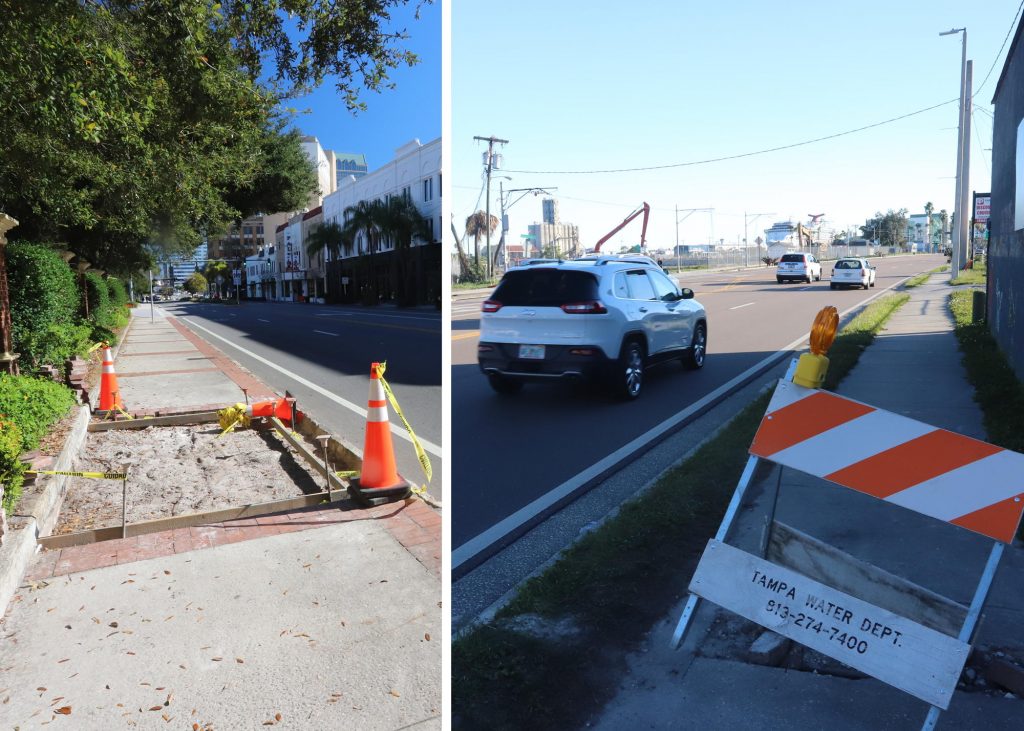
But we know that density means a stronger case for walkability and a stronger case for transit. We’ve seen the automotive paradigm changing even in Florida. The Brightline has chugged forward. Across the state, Miami, which continues to densify with one of the tallest skylines in the United States, is also one of the densest cities in the US. Neighboring Broward County just passed a monumental transit expansion funding plan that will raise hundreds of millions of dollars– as did Tampa’s Hillsborough County.
TAMPA HAS HART
One of Tampa’s success stories is a streetcar line that connects from the convention center downtown, half a block from the Marriott, to historic Ybor City. The TECO line, as she is known after the name of her historical progenitor, opened in 2002. This was only three years after the closure of the city’s ill-fated People Mover, and was recently expanded to the convention center. (Kindred spirit to Detroit, like I’ve been saying).
Ybor, named after eponymous purveyor of cigars Vicente Martinez-Ybor, was a company town, built up as Tampa’s then-nascent rail connection made it a perfect point of departure for the trade of Cuban tobacco. Ybor led a coalition of like-minded cigar magnates to build the town, which was annexed to the city of Tampa in 1887. Cigar shops still dot the main drag along 7th Avenue.
You can buy a custom cigar and have it hand-rolled in front of your very eyes, which is actually kind of amazing in our era of mass production. 7th Ave., which boasts a lively mixture of hipsters and artists, panhandlers and addicts, and all manner of bargoers, has a distinctly French Quarter vibe. Though it honestly feels like a bit less of a tourist trap than New Orleans.
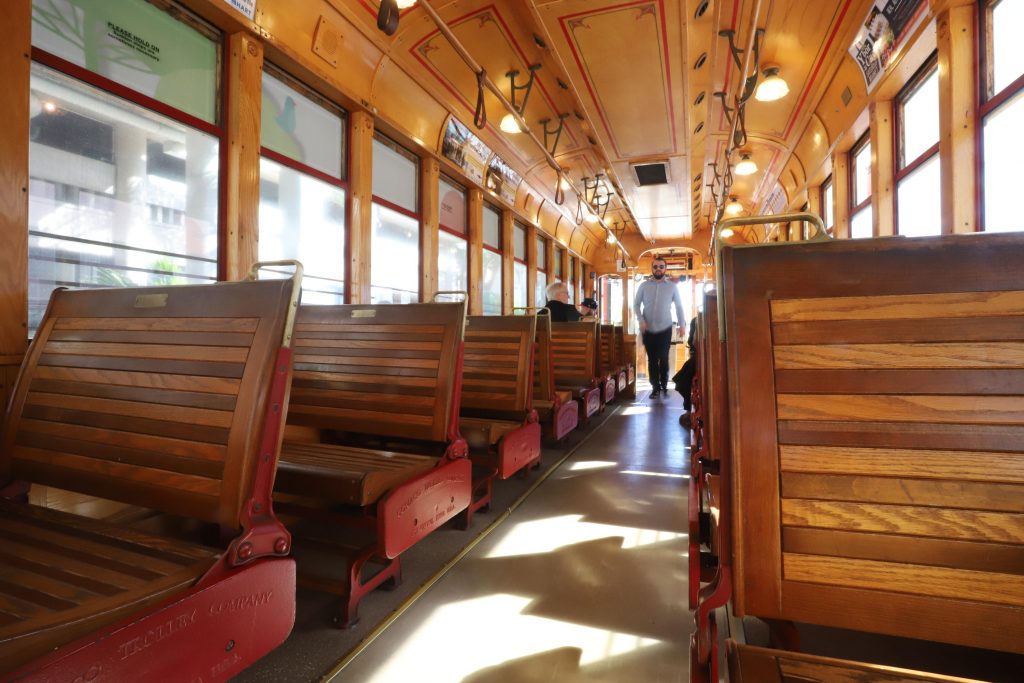
Featuring multiple stops for the restored, historic streetcar, Ybor is veritably a neighborhood-sized park-and-ride. There are some parking structures and large, cheap lots. It’s thereby possible to park your car to head downtown for an event, a game, or a cruise. I rode the streetcar twice and it was pretty full both times. Ridership numbers have increased by leaps and bounds since a state grant enabled HART to eliminate the $2.50 fare. Alternative modes of transportation are welcome in a city choked with congestion.
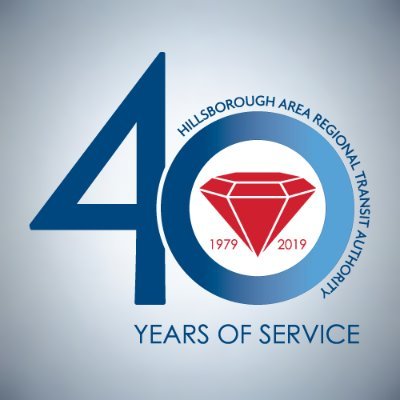 HART has been dogged by some organizational woes in recent months. But its major success story is the passage of a 1% sales tax in the county to fund infrastructure improvements and transit. The tax is currently being debated in courts as County Commissioner Stacy White filed a suit against it, arguing that it unconstitutionally subverts County authority. Ever deeper down that rabbit hole, an ethics complaint against White argues that he violated state law in opposing the tax. (I tried to reach out to White to try and understand his perspective on how infrastructure should be funded if not through this tax, but had not heard back as of the time of publication).
HART has been dogged by some organizational woes in recent months. But its major success story is the passage of a 1% sales tax in the county to fund infrastructure improvements and transit. The tax is currently being debated in courts as County Commissioner Stacy White filed a suit against it, arguing that it unconstitutionally subverts County authority. Ever deeper down that rabbit hole, an ethics complaint against White argues that he violated state law in opposing the tax. (I tried to reach out to White to try and understand his perspective on how infrastructure should be funded if not through this tax, but had not heard back as of the time of publication).
REGIONAL GROWTH POTENTIAL
Let me be unequivocal: Tampa’s suburbs are pretty awful. And they go on forever. I hung out with some friends who are staying with one’s parents in Brandon. Brandon is a solidly middle class, mid-ring suburb. They live in a gated community with stuccoed houses and manicured lawns. Brandon is the Brandon of Brandon. There’s no “there” there.
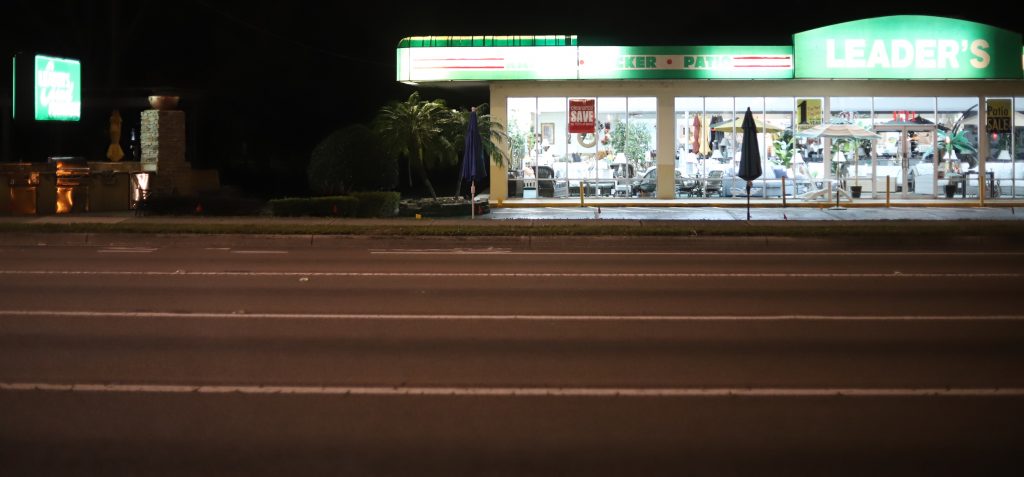
The city, which has grown about a hundred fold in the past half century, has over a hundred thousand residents. Though, driving around, it’s unclear where they all live. Brandon has a main drag with six to eight lanes with unrestricted access. It has car dealerships and chain restaurants. It also has a pretty vibrant anti-transit contingent. Though it still has, by any estimate, several thousand residents below the poverty line who still have to get to work. Unchecked sprawl has filled to capacity roads in places like Brandon and farther-flung suburbs.
Perhaps frustrating to transit advocates is the fact that 15% of the Hillsborough County tax can be spent on road infrastructure projects like “adding lane capacity.” This is a bit of a misnomer, since most evidence suggests that adding lanes does not actually increase capacity and instead just creates more traffic. But driving around Brandon, where bumper-to-bumper traffic can be found late on a Tuesday night, it’s apparent that congestion is a pandemic in South Florida.
Key in the long-term success of the region is intentional management of growth trends projected to bring hundreds of thousands of more residents to the Tampa area alone. My hope– and likely the hope of the pro-transit crowd- is that it continues in the form of mid to high density development such as the buildings pictured below, which are ubiquitous in the city of Tampa. Climate change adaptation and sustainable planning are also critical, evident in seeing how much of the region is unforgivingly hardscaped. I wrote about this in the fall and specifically looked at Tampa. A weak MPO and a lack of political will to manage growth will invariably make climate change hurt that much more. But it’s possible to consider carrots versus sticks– to incentivize TOD, for example, or avoid parking minimums. I was unclear on whether these exist in metro Tampa, but they’re certainly not widespread.
There are very few truly urban areas. St. Petersburg, across Tampa Bay, offers a much more intact, historic downtown. The city is also far older than Tampa, which was mostly developed in the latter half of the 20th century. The two are now connected with a high-speed ferry that offers a limited schedule but a scenic alternative to the inevitable gridlock on the several causeways and bridges that cross the bay. Transit expansion promises the possibility of far better and faster connectivity than what is currently offered.
I’m eager to follow the developments with HART and will be publishing a follow-up with some more information from the conference in the coming days.
